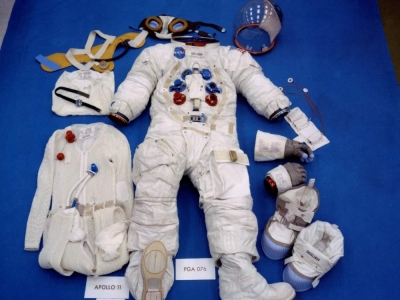How an astronaut’s spacesuit is made?

One of the weirdest features in space travel is the spacesuit worn by astronauts, with its huge spherical helmet, the tunic, the bulky gloves and boots and all the various gadgets and fittings.
The space-suit is a highly perfected machine in itself. It consists of no fewer than fifteen layers of special materials to protect the body of the astronaut. The space suit must provide oxygen for the astronaut to breathe and protect the astronaut from the vacuum and heat or cold of space. It must also be flexible enough to allow the astronaut to move freely. For travel in space, the astronaut wears an MMU (manned maneuvering unit), which contains small gas-powered thrusters.
The space-suit must also contain food and water supplies, fitting to dispose of bodily wastes and surface to deflect heat and radiation. The helmet visor requires protective tilters to prevent the astronaut from viewing the Sun directly and risking severe dazzling and retinal burns. The suit also has to be fireproofed to the maximum possible extent.
The space-suit took years and millions of dollars to develop.
Picture Credit : Google
